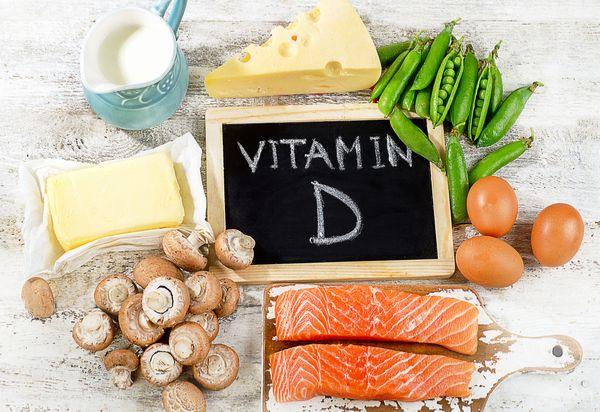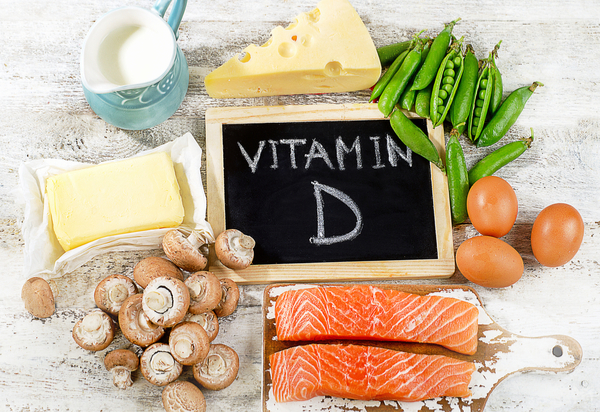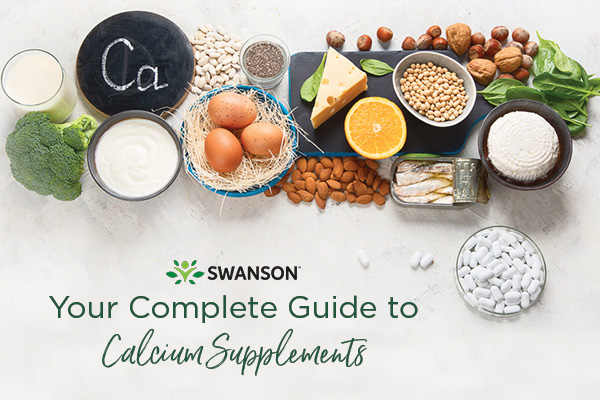Vitamin D: The "Sunshine Vitamin"!
Vitamin D has become one of the most popular supplements in recent years thanks to increasing interest from the scientific community, which is continuing to find new links between vitamin D and various health concerns.1 In fact, vitamin D has become so popular, it’s even earned itself a nickname: the Sunshine Vitamin.
That nickname, however, has become somewhat of a blessing and a curse. While it’s true the human body produces natural vitamin D when your skin is exposed to sunlight, it’s easy to forget that we can also get this vital nutrient from our daily diet. We just need to know which foods to keep stocked in the pantry.
During the winter months, especially for folks living in northern climates, the sun’s rays just are not powerful enough to provide adequate exposure. Thus, our bodies can’t produce enough vitamin D to keep up with our daily needs. Even in the summer, the push to bathe ourselves in sunscreen lotions and sprays further reduces our opportunities to produce our own vitamin D.
How Much Vitamin D Should I Take?
So, we need to look past the fun nickname and focus more on satisfying our daily nutritional requirements for vitamin D through our diets. With about 88% of the world's population believed to have sub-optimal levels of vitamin D, governments such as Finland and Switzerland have begun recommending Vitamin D supplements be taken by their citizens.5 In the United States, the National Institutes of Health (NIH) lists the following recommendations for daily vitamin D intake:
- Infants under 12 months: 400 IU
- Children aged 1-13 years: 600 IU
- Teens aged 14-18 years: 600 IU
- Adults aged 19-70 years: 600 IU
- Adults aged 71+: 800 IU
- Pregnant and breastfeeding women: 600 IU
What Does Vitamin D Do?
According to the NIH, “Vitamin D...is needed for health and to maintain strong bones. It does so by helping the body absorb calcium (one of bone’s main building blocks) from food and supplements.”2
Thus, a deficiency in vitamin D can often lead to a decrease in bone health, specifically bone density. This challenge may compound with age as the body’s natural ability to produce vitamin D decreases over time. Severe vitamin D deficiency is also being studied for possible connections to cardiovascular health, blood pressure issues and even immune system challenges.
Vitamin D could be seen as one of the most important nutrients to your body, as it has a positive impact on the health of your bones, teeth, muscles and organs, in addition to supporting a healthy immune system.
Which Foods Have Vitamin D?
Unlike most minerals and some other vitamins, vitamin D poses a bit more of a challenge when it comes to diet. It’s simply not a natural component of most foods. In fact, in the standard American diet, fortified foods like milk and cereal are the most common sources of dietary vitamin D. However, there are a few go-to sources, particularly from the sea, you can easily incorporate into your regular meal plan.
Wild-Caught Fish
Fatty fish caught in the wild are Mother Nature’s best sources of natural vitamin D. Plus, with fatty fish like salmon and mackerel, you also get the bonus of adding some healthy omega-3 fatty acids to your diet.
- Salmon: 3 oz = approx. 400 IU (66% daily value (DV))
- Mackerel: 3 oz = approx. 540 IU (90% DV)
- Sardines: 3 oz = approx. 165 IU (28% DV)
- Canned tuna: 3 oz = approx. 155 IU (26% DV)
- Cod Liver Oil: 1 tsp = approx 440 IU (73% DV)
Beef Liver
While liver and onions may have been a staple a few decades ago, this dish is not as popular today. Nonetheless, beef liver provides a small amount of natural vitamin D. With a small 3-ounce portion, you can get about 40 IU of vitamin D (about 6% DV).
Egg Yolks
Like beef liver, egg yolks don’t provide nearly enough vitamin D to satisfy your daily requirement, but each single yolk does offer about 40 IU (6% DV). It’s yet another reason to add a healthy breakfast to your daily routine. Pair it with a glass of milk to boost your vitamin D intake.
Milk
Here in the United States, almost all our milk comes fortified with about 400 IU of vitamin D per quart. Just check the labels to be sure, as some powdered milk products do not contain any vitamin D.
Mushrooms
Here’s a fun fact for trivia night: mushrooms can produce their own vitamin D from sunlight just like humans.3 However, mushrooms tend to be grown in dark, damp conditions without much sunlight exposure, so check for certain varieties and brands that are grown under ultraviolet light, which spurs that natural vitamin D production.
Breakfast Cereals
Like milk, most breakfast cereals come fortified with vitamins and minerals, including vitamin D. Since many Americans and their children start the day with cereal, manufacturers give us a helpful boost by adding in key amounts of essential nutrients.
To get the most vitamin D from your bowl of cereal, be sure to include fortified milk. For those with certain dietary sensitivities, almond milk and goat milk are alternatives which are often enriched with vitamin D.
How to Get More Vitamin D
As you can see, most foods, unless otherwise fortified or enriched, are less than optimal sources of vitamin D, so it’s important to pay close attention (especially during the winter) to what you’re putting on your plate to keep your levels up. Read your food labels and consider a vitamin D supplement if you find you’re not getting enough to satisfy your daily requirement.
For example, one serving size of Swanson Health’s High-Potency Vitamin D-3 supplement provides 1,000 IU, a whopping 250% of the adult daily value.
A daily vitamin D supplement can help remove the guesswork in figuring out if you are getting enough vitamin D. Moreover, doctors and nutritionists often recommend higher daily vitamin D intake than the U.S. Food & Drug Administration (FDA), especially if you are at risk for vitamin D deficiency, have symptoms of vitamin D deficiency or have been tested for vitamin D deficiency.
The Vitamin D Council, an organization dedicated to raising awareness about vitamin D and vitamin D deficiency, recommends average adults supplement 5,000 IU of vitamin D3 daily.4 Since recommended daily intakes can vary widely between organizations and healthcare professionals, it’s best to consult your physician or nutritionist to determine the best daily intake of vitamin D for your optimal health.

About Amy Sunderman, MS, RD
Amy is a registered dietitian, nutritionist and author with more than 20 years of experience in the supplement industry. Amy is passionate about dietary supplements and the health benefits they offer. She enjoys working to find novel nutritional ingredients with strong clinical research behind them to drive innovation and provide health-promoting products to consumers.
*These statements have not been evaluated by the Food and Drug Administration. These products are not intended to diagnose, treat, cure, or prevent any disease.
Sources
1. 10 Illnesses Linked to Vitamin D Deficiency. Everyday Health. Read source
2. Vitamin D. National Institutes of Health. Read source
3. Vitamin D in Mushrooms. Mushroom Council. Read source
4. Vitamin D. MedLine Plus. Read source
5. Bridging the Vitamin D Gap. IADSA. Read source




